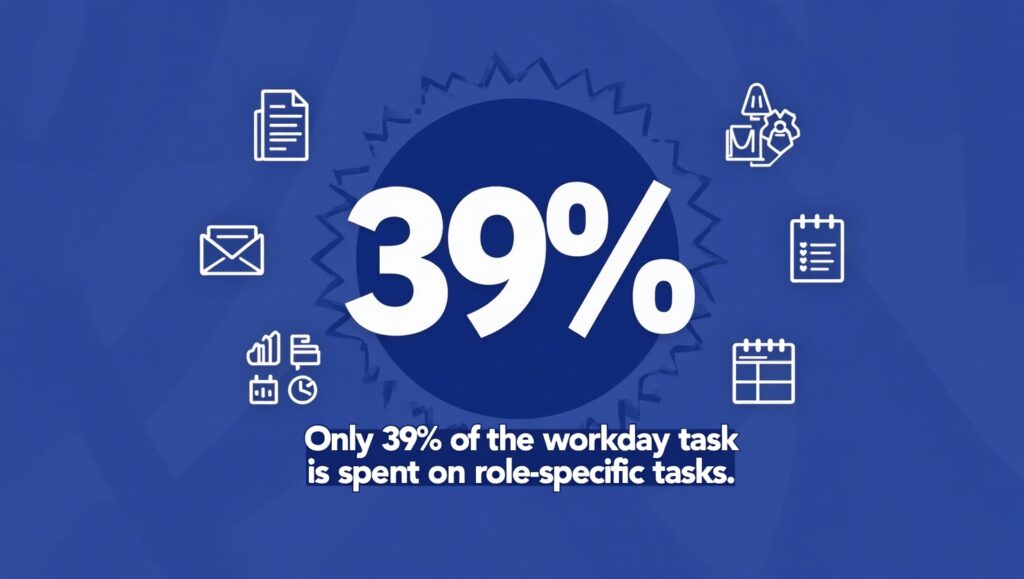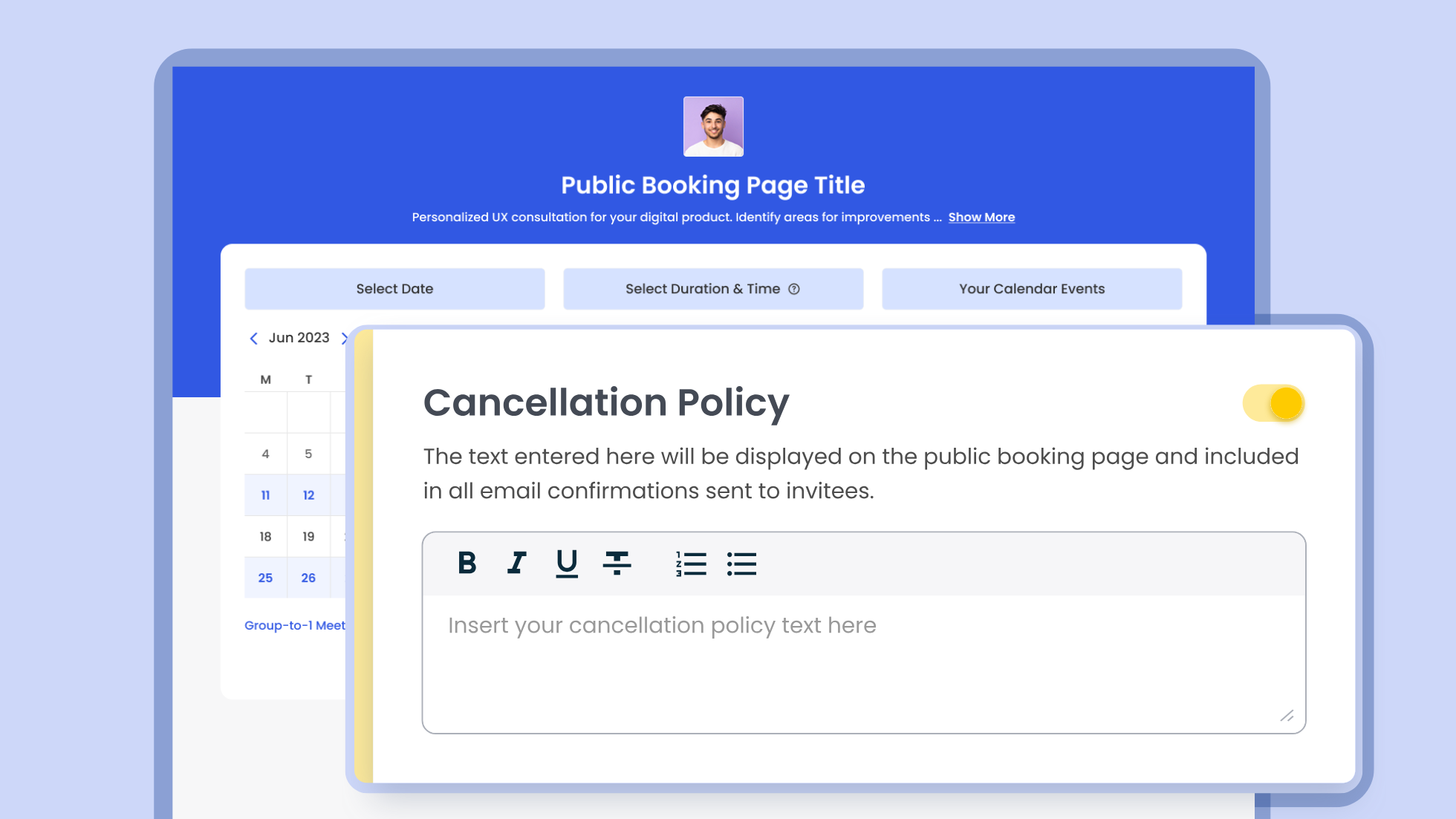Why Productivity Tools Can Make or Break a Small Business

Running a small business often feels like balancing spinning plates while riding a unicycle. Between client calls, tracking deadlines, and endless to-do lists, maintaining work-life balance becomes hard, as small inefficiencies can snowball into costly problems.
The difference between thriving and scrambling often comes down to your systems. When your software doesn’t integrate, especially in task and project management, or requires too much manual work, it hinders increased productivity as your team’s energy gets drained managing the process instead of delivering results.
If you’ve ever been double-booked, lost in email threads, or chasing overdue updates, the right tools can change everything. They allow you to standardize workflows, reduce human error, and create an environment where your team can focus on important information and spend more time innovating and less time troubleshooting.
Why Small Businesses Need Better Productivity Tools
The Hidden Cost of Poor Organization
Inefficiency isn’t just inconvenient — it’s expensive. For small businesses, missed deadlines, poor task assignment, or scheduling conflicts can lead to:
- Lost revenue opportunities from missed sales calls or delayed projects
- Damaged client relationships when expectations aren’t met
- Lower team morale due to constant firefighting
When a meeting gets double-booked or a project stalls due to miscommunication regarding sensitive information, it can trigger a chain reaction that impacts your bottom line and reduces your team’s capacity.

Did you know? Employees spend only 39% of their day on role-specific tasks. The rest is eaten up by recurring admin work—time that could be reclaimed through automation and smarter workflows.
How Routine Tasks Drain Team Energy
Without the right systems, teams spend too much time:
- Playing email tag to book meetings
- Updating multiple spreadsheets manually
- Chasing project updates across different apps
Over time, this constant “context switching” drains focus and slows productivity. Modern productivity tools replace that chaos with streamlined, automated workflows.
For example, instead of manually updating three different documents after a client call, a connected system can instantly log notes, assign tasks, and update your sales pipeline — all without you lifting a finger.
Best Project Management Software for Small Businesses
Good project management tools do more than check off tasks — they offer customization options that enhance performance, create clarity, accountability, and alignment. The best ones let you:
- See exactly who’s working on what, and by when
- View progress in real time without endless status meetings
- Spot bottlenecks before they become problems
- Sync seamlessly with your messaging and calendar tools
Top Picks & Quick Pros/Cons:
- Asana – Excellent visual timelines; automation features; can be overwhelming for very small teams
- Trello – Easy to start; visual boards; limited advanced reporting
- ClickUp – Highly customizable; replaces multiple tools; steeper learning curve
💡 Pro Tip: Start with one or two core features, then gradually adopt advanced functions as your team gets comfortable.
Best Scheduling Tools for Small Businesses
Google Calendar is a great starting point, but many teams benefit from dedicated scheduling software for small businesses that offers:
- Automated scheduling links for clients
- Time zone conversion for global teams
- Group-to-1 bookings for workshops or consultations
- Buffer times to prevent meeting fatigue
Top Picks:
- Calfrenzy – team-friendly appointment scheduling software with advanced booking options, automated reminders, and secure payment features
- Calendly – Popular and feature-rich, but costly for large teams
- Motion – AI-powered scheduling and task prioritization
💡 Why it matters: A great scheduling tool enhances connection, reduces back-and-forth emails, prevents double-bookings, and ensures everyone is on the same page.
Productivity Tools for Teams: Messaging & Collaboration Apps
Email is notorious for burying essential updates. Messaging apps create transparent communication channels that:
- Organize discussions by topic or project
- Make past conversations searchable
- Help new hires quickly get up to speed
Top Picks:
- Microsoft Teams – Best for Microsoft 365 users; integrates chat, calls, and file sharing in one place
- Slack – Flexible channels, extensive integrations, powerful search
- Discord – Great for casual, real-time collaboration (popular with creative teams)
💡 Pro Tip: Choose a messaging tool your team will actually use. Overcomplicated platforms lead to under-communication.
Sharing and Organizing Meeting Notes Without the Mess
Post-meeting confusion wastes time. Tools like Notion, Coda, and Fellow let you:
- Store meeting notes in a central place
- Tag action items and assign owners
- Automatically sync decisions with project boards
This eliminates the dreaded “Wait, who was supposed to do that?” problem. It also ensures that decisions made in meetings aren’t lost in the shuffle but are instead captured, tracked, and acted on.
Top Automation Tools to Streamline Your Workflow
The right small business automation tools can save hours each week by removing repetitive, manual tasks, significantly improving team efficiency. From connecting your apps to building complex workflows, automation keeps your team focused on meaningful work.
Top Picks:
- Zapier – Connects your tools and automates workflows
- Make (Integromat) – Visual builder for complex automation logic
- Microsoft Power Automate – Best for Microsoft-heavy tech stacks
Top Productivity Apps by Category
Whether you need scheduling, collaboration, or automation, these small business productivity apps provide easy access to tools that deliver results:
- Scheduling & Calendar Management: Calfrenzy, Calendly, Motion
- Project & Task Management: Asana, Trello, ClickUp
- Messaging & Communication: Slack, Microsoft Teams, Twist
- Automation Tools: Zapier, Make, Microsoft Power Automate
- All-in-One Platforms: Notion, Coda, Airtable
How to Choose the Right Productivity Tools for Your Team
Key factors to consider:
- Integrations: Will it connect with your existing tech stack?
- Learning Curve: Is it intuitive enough for quick adoption?
- Scalability: Will it still fit your needs when your team doubles?
Switching Without the Headache: Gain better control over your tools during transitions.
- Run tools in parallel during onboarding
- Start with new projects in the new platform
- Train early adopters first so they can support others
- Set a firm cutoff date for retiring old tools
💡 Pro Tip: Many modern tools offer migration assistance — take advantage of it to save time and avoid data loss.
Trends: The Future of Efficiency Tools for Small Businesses
- AI-driven scheduling & task prioritization will become the norm
- Deeper integrations between project, chat, and scheduling platforms
- Voice and meeting transcription tools that automatically generate action items
- Value-driven platforms like Calfrenzy replacing overpriced legacy tools
Final Thoughts + Action Steps
The right productivity tools can help you optimize processes and do more than save your team time — they free your team to focus on personal growth, enabling the sharing of ideas, creativity, and client success.
Quick Start Plan:
- Audit your current tools and pain points
- Pick one category to improve first (e.g., scheduling)
- Test free trials of your top 2–3 picks
- Roll out gradually, gathering team feedback
Try Calfrenzy today and see how effortless scheduling can be — without paying $10 per user.
Sign Up Is Easy 90 Seconds
Ready to make scheduling stress free?
You can register, connect your calendar, and start scheduling in just 90 seconds.
It’s that simple.







